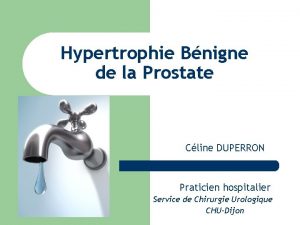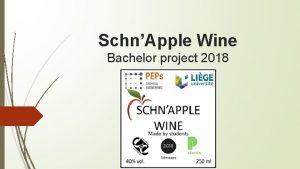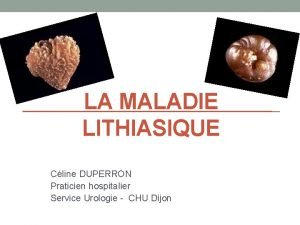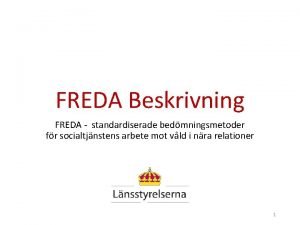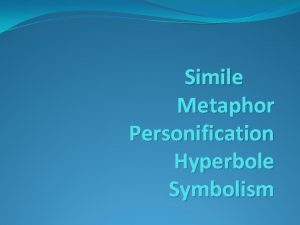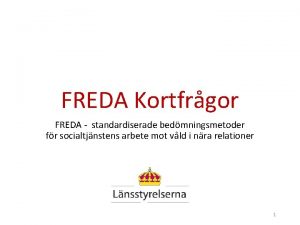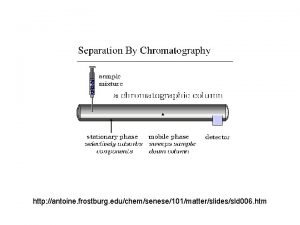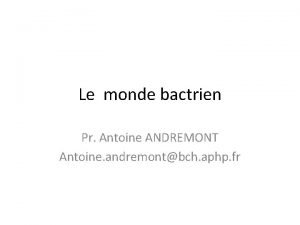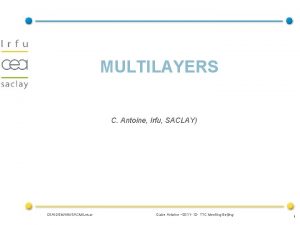YEP Team 5 Antoine Reed Celine Dischamps Freda












![Corrosion of Ti in HCl Grade 2 Ti [2] • At p. H =5, Corrosion of Ti in HCl Grade 2 Ti [2] • At p. H =5,](https://slidetodoc.com/presentation_image_h/10cc096c64f018f5f0fd4d5430df1094/image-13.jpg)









- Slides: 22

YEP Team 5 Antoine Reed, Celine Dischamps, Freda Akwah, Sophie Zhang

Overview o Process overview o Operation conditions (deviations from intended design) o Failure Observations (Recycle line and Drain line) o Root Cause Analysis o Corrosion Risk Assessment o Risk mitigation and solutions ØShort-term ØMedium-term ØLong-term

Process overview Initial investigation PFD mapping out all the information we gathered and identifying areas of uncertainty

Process overview: front end

Process overview: evaporator Observed leaks in similar conditions Assume same failure mechanisms

Investigation: To Pump Suction To Density Meter To Centrifuge FLOW DIRECTION DEAD LEG B DEAD LEG To Sample Point FLOW DIRECTION A To Flush Line

Investigation: Observed process conditions which are cause for concern: • High velocity of slurry in pipe => risk of errosion • Vacuum not maintained for the past year => O 2 ingress • Formation of organic acids => acidic environment • Corrosive chloride ions present in the solution • Operating at high temperatures (160 deg C reported)

Acid formation: Formic Acid • MEG oxidises in presence of air and heat to aldehyde • Aldehyde oxidises further to all three acids. • Ti. O 2 is a catalyst to the reactions MEG Glycolic Acid 2 -hydroxyacetaldehyde Acetic Acid

Titanium Grade 12 • A high strength, high corrosion resistance and weldable alloy used for various industrial and aerospace applications. • Titanium 12 has two phases (α-alpha) and (β-beta). • α-alpha phase is generally associated with a low modulus, but good corrosion resistance and weldability • Β-beta phase is generally associated with a higher modulus, it serves to make the material more workable for industrial applications. • HAZ has more Β-beta phase because of the precipitation of beta due to the welding.

Failure Observations (Leak 1 recycle line Joint A) • Gross pitting downstream from B end • Failure from inside to outside • Gross pitting predominately in the HAZ of the branch weld and the seam weld of the pipe Flow direction • Additional pitting in the pipe parent material downstream from TEE junction flow away from the main pipe • Majority of internally surface not associated with pitting and seems unaffected • No deposits on the internal surface of the pipe (maybe due to the process) HAZ of branch weld JA 2 JA 1 HAZ of seam weld Surface crack transverse to the weld

Failure Observations (recycle line Joint B) • Fine branchlike cracking initiating from the internal surface HAZ Parent material • Cracking transverse to the welding direction • Cracking but no leaking β phase: ‘bright platelets’ ‘Cleavage’ like fracture surfaces intergranular cracking and along the alpha/beta interface

Root Cause Analysis – leak 1 joint A Na. Cl solids (2. 5 wt%) high Cl- Flow velocity 11 m/s Piping geometry, right angle bend , additional turbulence 1. Erosion+ Corrosion p. H 5 – 5. 5, acidification O 2 ingress Formation of HCl 2. HCl corrosion Destabilise passive film + Reducing potential Formation of organic acids Residual stress from weldment HAZ Gross pitting in HAZs of seam weld, branch weld; internal crack to the weld 4. Stress corrosion cracking / Hydrogen induced cracking 3. Preferential attack in β phase Change in microstructure: from fully α to α+β
![Corrosion of Ti in HCl Grade 2 Ti 2 At p H 5 Corrosion of Ti in HCl Grade 2 Ti [2] • At p. H =5,](https://slidetodoc.com/presentation_image_h/10cc096c64f018f5f0fd4d5430df1094/image-13.jpg)
Corrosion of Ti in HCl Grade 2 Ti [2] • At p. H =5, active dissolution of Ti occurs • Rapid deterioration of corrosion resistance of Gr 12. when HCl% > 2% [1] Kaminaka et al. 2014; [2] Total Materia database

Root Cause Analysis - Leak 1 joint B Hydrogen induced cracking (HIC) β phase: ‘bright platelets’ • Atomic Hydrogen is produced by corrosion • H adsorption and diffusion ØDifferentiation of H diffusion in alpha and beta phases ØIntermetallics Ti 2 Ni preferential sites for H adsorption ØHigh temperature (>80 °C) significantly promotes H diffusion [3] • Hydride formation – maybe preferentially in beta phase (low H solubility) Ø Brittle – loss in ductility [3] Hua et al. 2005

Corrosion Risk Assessment • What is a Corrosion Risk Assessment • Methodology • Inputs: ü intended service üselected material üoperating conditions üWhat controls are in place üUpset conditions • Uncertainties in the data provided (p. H levels, solids content, temperature)

The identifiable Risk (predictable? ) • What is the Risk against the identified damage mechanisms • Should the possibility of upset conditions have been considered at design stage • What is the likelihood of failure • Was Titanium Grade 12 material suitable for this service

Consequences of Failure • People (risk of death or serious injury) - determined that there was no risk of death • Environment (pollution) - minimal • Economic (plant shutdown, fines & cost of moving production to a different facility) - some disruption

Mitigation Measures • Introduce measures that will prevent a reducing environment being formed (organic acids) • Introduce extra controls in place to allow early capture of any issues e. g. loss of vacuum, p. H , O 2 content • Establish a targeted inspection programme (Risk-based inspection) • Replace with a better grade titanium

Short term (< 4 weeks) • ‘Apply wraps’ or ‘repair sticks’ to the areas of the assembly which have failed. • Pros: • Cheap, Fast and Easy • Downside: • Short term • Begin to plan for future activities (NDT + RCA analysis which will require cut out and shut down of the batch process)

Medium + Long term (till end of life) • With the results from the RCA and NDT. Appropriate action should be implemented: • Replace piping. Ensure appropriate welding procedure. • Corrosion inhibitors/deration of process. (Na 2 Mo. O 4 possible inhibitor) • Pros + Cons: • Longer Lasting Solution that should last until end of service • May be expensive. • Will only work if process issues are resolved.

Monitoring (Until End of life) • Monitoring the PH/Oxygen of the spillback line • PH levels should be constant for each batch. • Oxygen levels should be monitored. • If issues with oxygen continue • new oxygen scavenger in the MEG tank. • Pro + Cons • Requires some management • Relatively cheap

Summary • Process: Planned process operating parameters and fluid chemistries were upset over time. • Grade 12: may have been acceptable should the process not have been upset • Causes of Failure: salt slurry, low p. H, HCl, O 2, reducing potential; right angle bend TEE joint; susceptible microstructure • Mitigations: short, medium and long term
 Antoine reed
Antoine reed Reed v reed ap gov
Reed v reed ap gov Young energy jobs
Young energy jobs Priority of sendai framework
Priority of sendai framework Yep 10
Yep 10 Lawrence yep
Lawrence yep Edith child since glasses was a worm has she
Edith child since glasses was a worm has she Www.asuspromo.in
Www.asuspromo.in Celine duperron
Celine duperron Power of love celine dion
Power of love celine dion Desetica ivan cankar tema
Desetica ivan cankar tema Céline closset
Céline closset Prva ljubav branislav nusic tematske celine
Prva ljubav branislav nusic tematske celine Celine deon titanic
Celine deon titanic Oars communication
Oars communication Prica o raku krojacu
Prica o raku krojacu Celine dion so this is christmas
Celine dion so this is christmas Dr duperron chu dijon
Dr duperron chu dijon Celine dion presentation
Celine dion presentation Cline deon
Cline deon Freda skyddsbedömning
Freda skyddsbedömning Door personification
Door personification Freda walker
Freda walker








